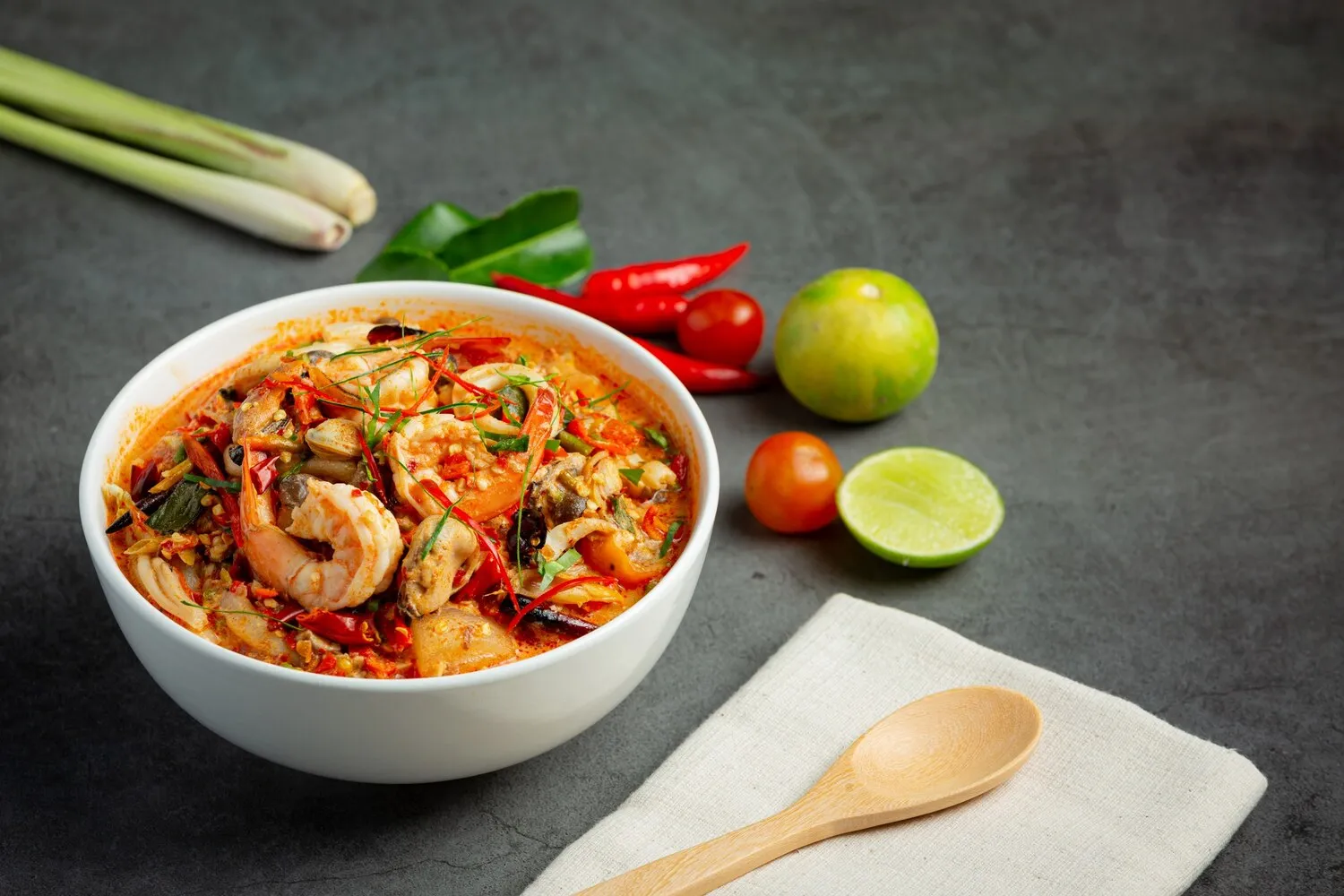
Lobster Bisque
Creamy soup with lobster.
Nutrition Facts
* The % Daily Value (DV) tells you how much a nutrient in a serving of food contributes to a daily diet. 2,000 calories a day is used for general nutrition advice.
Bisque, as a category of creamy, strained soups, has roots in French cuisine dating back to the 17th century. Lobster bisque specifically likely developed as a way to utilize all parts of the lobster, including the shells, for a rich and flavorful soup. Its evolution is tied to the development of classical French culinary techniques and the increasing availability of ingredients.
Lobster bisque is often associated with fine dining and special occasions. It represents culinary refinement and a celebration of seafood.
Status Symbol
Lobster, being a relatively expensive ingredient, elevates bisque to a dish often served in upscale restaurants or at celebratory meals. It signifies indulgence and culinary sophistication.
French Culinary Heritage
As a classic French dish, lobster bisque embodies the principles of French cuisine, emphasizing careful preparation, high-quality ingredients, and balanced flavors.
Celebratory Dish
It is frequently featured on menus for anniversaries, birthdays, or other special events where a sophisticated and luxurious dining experience is desired.
Lobster bisque is characterized by its rich, creamy, and intensely flavorful profile, primarily derived from lobster. It often possesses a subtle sweetness balanced by savory and slightly briny notes.
The dominant flavor is undoubtedly lobster, with a deep umami and sweet taste extracted from both the meat and the shells. The cream contributes richness and a smooth texture, while butter adds further depth and a velvety mouthfeel. Aromatic vegetables like onions, carrots, and celery provide a subtle sweetness and complexity. Sherry or brandy is often added for a touch of acidity and a warm, nutty aroma. Herbs such as thyme or bay leaf lend subtle earthy undertones. The bisque is seasoned with salt, pepper, and sometimes a touch of cayenne pepper for a subtle kick.
Roasting the Lobster Shells
Roasting the lobster shells before simmering them enhances the flavor extraction and adds depth to the bisque. This step intensifies the crustacean flavor.
Straining Thoroughly
Straining the bisque through a fine-mesh sieve or cheesecloth is crucial for achieving a smooth and velvety texture. Remove any solids to create a refined consistency.
Avoid Overcooking
Overcooking the bisque, especially after adding the cream, can cause it to curdle or separate. Simmer gently and avoid high heat.
Season to Taste
Adjust the seasoning carefully, as the saltiness of the lobster can vary. Taste frequently and add salt, pepper, or a touch of cayenne to balance the flavors.
Use High-Quality Ingredients
Using fresh, high-quality lobster and cream is essential for achieving the best flavor and texture. The better the ingredients, the better the final product.
Explore additional Soup dishes and restaurants
Explore SoupDiscover top dining spots and culinary experiences in Dunedin.
Explore DunedinLearn more about the food culture, restaurant scene, and culinary heritage of United States.
Explore United States